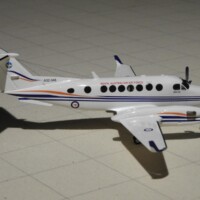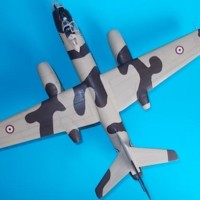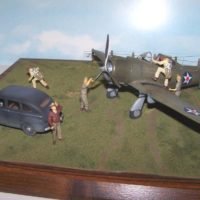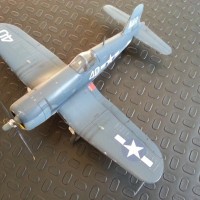Another Molesworth's Horse
Introduction
The R-6H has been covered in detail in two articles by Gábor Szabó on this very site so no history this time. As the long range Gee Bee racers are interesting aircraft I thought I'd build one so I picked up the SBS kit. It's a very nice looking resin kit with a nice set of decals but with some serious issues that need to be addressed. After building the kit I must confess that I'm surprised that SBS have something this poor in their inventory. SBS are normally a company which do extremely high quality work especially their Bristol Mercury engines so one wonders. A lot of the issues with the kit are covered very nicely by Gabriel Stern in his build on the 'Wings of Intent' blog. This is definitely worth reading before embarking on this kit. Even so some issues are left uncorrected by him.
Issues to note
Apart from those mentioned by Gabriel the wing fairings are too short and the tailplane fillets wrong. I was able to find a very nice set of GA drawings with a lot of useful information which I believe were original Granville Brothers drawings. These I used as the base for my build coupled with all the photos I could find. I ended up leaving the wing fairings but correcting the tailplane issues. I also left the engine uncorrected mainly because locating a suitably sized Hornet engine proved too difficult. The propeller I did scratch build though as the kit one was far too inaccurate. I also added exhaust pipe, the unique cowling framing and a collector ring to bring the model into the right time frame. The top row of canopy fastners also needs to go - they were only present on the underside but there needs to be an engraved line. The configuration molded by SBS is the 1938 iteration of the R-6H. The decals and colour schemes provided cover the period 1934-1935 - they were different. Navigation lights were fabricated from thin slivers of biplane landing leg (to get the right teardrop profile) for the base and PVC glue. The pitot tube was scratch built from 0.3 mm and 0.5 mm Albion tube. I also had to add a lot of external detail which had been left off, add panel lines and access hatches and fill other panel lines.
I chose to model the aircraft as it was often seen on the ground with the removable canopies stored elsewhere. As the kit part was one piece this entailed cutting. It's an easy operation - one just needs to be painstaking. The canopy has rather deep lines separating each segment and one masks either side of these. A cotton wool pad is used to support the inside and the deep line is scored out to 0.15mm with a Tamiya scriber. Then with a Tamiya 0.1 mm saw blade one gently saws the parts apart. It doesn't take long and there is no damage to the segments.
Decals and Colour Scheme
The decals are pretty and go on well but all the chosen schemes are incomplete. American racers carried aircraft race numbers in four positions for which SBS have only provided two decals. Thus for the 77 and 90 colour schemes the upper left and lower right numbers on the wings are missing. For the MacRobertson Air Race scheme the race numbers were carried in three positions - both sides of the tail and one under the fuselage. This latter one is missing which is a common omission for companies modelling MacRobertson aircraft. One also needs to find Hamilton Standard propeller logos which were prominently displayed. These need to be the smaller sized logos. Finally I added the black warning stripe showing where to undo the cowling. Like Gabriel I went with a darker green which I thought more appropriate than that recommended by SBS. I used Tamiya X-5 enamel and the propeller was chrome painted with Molotow and Gundam markers. Rigging wires were from the SBS sets - my plans gave dimensions for all the wires and I was able to convert these to 1/72. Wire spreaders were 0.4 mm plastic rod.
Conclusion
The model builds nicely and is fairly simple but needs a lot of correction to make an accurate 1934/5 R-6H. If you can source decals for the later schemes it is more appropriate for these. It does look good when finished and matches the Molesworth Horse nature of the original (see my article on the Renard R-31).








You never stop to amaze us with your subjects selection, Christopher!
An excellent result and a really informative article!
Thanks for the very kind comments Spiros. These aircraft are quite something to look at and worth modelling.
A nice little gem, Christopher
Thanks very kindly Gary - it does build into a nice result
The result is amazing, Christopher @christopher
No signs that this is such a troublesome kit.
Thanks John @johnb for the very kind comments. It is a troublesome kit, I agree but is buildable.
Very nice! You specialize in the unusual subjects!
You're very kind Greg - many thanks. I also have the R-2 Sportster version to build.
Nicely done Christopher.
Thanks ever so much Allan.